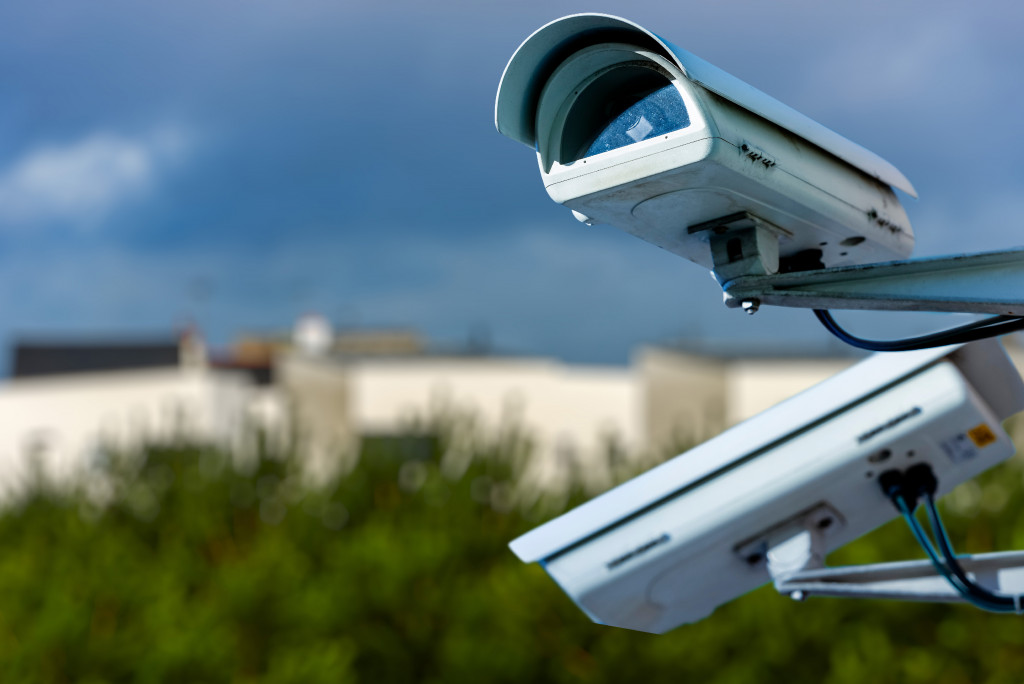- Landscape design, security cameras, and lighting are key exterior elements that can enhance home security.
- Fencing and secure doors and windows act as sturdy physical barriers.
- Involvement in neighborhood watch programs fosters community vigilance and effective crime prevention.
- Regular updates of safety measures and continuous vigilance are essential in maintaining a secure home environment.
As a responsible homeowner, you have to prioritize safety and security in your home. It is not only essential to secure your valuable belongings but also to ensure the safety of your loved ones. While people tend to focus more on high-tech security systems, you often overlook the fundamental yet crucial role that exterior design plays in enhancing home safety. This blog will discuss the critical external design elements that can boost your home’s security and keep you and your family protected.
Landscaping and Structural Design:
Outdated, overgrown, or poorly designed landscaping can provide cover for burglars to invade your home. When planning your exterior landscapes, consider planting thorny shrubs or bushes that act as barriers to entry. Additionally, landscaping elements such as gravel paths, river rocks, and boulders can make it challenging for intruders to access your property. Here are other things to add to your landscape:
Security Cameras:
Incorporating security cameras into your home’s exterior design can significantly enhance your property’s security. These devices act as a deterrent to potential intruders, increasing the risk of detection and capture. Modern security cameras often include features like motion detection, night vision, and remote monitoring capabilities, allowing you to keep an eye on your property in real time, regardless of your location.
Matching the design and color of the cameras with your home’s exterior can make them less conspicuous while maintaining their functionality. Remember, the positioning of these cameras is crucial to cover all potential entry points and vulnerable areas around the house.
Lighting:
Lighting is an essential component that can help you improve your home’s security. A well-lit exterior can deter burglars or intruders from attempting to discreetly enter your property.
Consider installing motion-sensor lights in critical areas like the front and backyard, stairways, and entrances. You can also use landscape lighting to illuminate the walkways and the other regions that are susceptible to tripping or falling.
Fencing and Access Control:
A sturdy fence can act as the first line of defense in securing your property’s perimeter. A tall fence with a gate adds more difficulty for intruders to enter. A trusted fence contractor can help you select the best fencing design for your home.
However, ensure that your fence doesn’t obstruct the view of your neighbors or passers-by. Additionally, ensure that you have reasonable access control in place, which includes using locking mechanisms like locks, chains, or automated gates.

Windows and Doors:
Windows and doors are the most vulnerable points in any home. Ensure they are installed with sturdy frames and locks that are difficult to break.
If your front door has windows, replace them with glass that are break-proof. Also, consider installing deadbolts on all the doors.
Equip all the doors with peepholes to allow you to check who is on the other side without opening the door. It’s also recommended to install double-paned windows for additional protection.

Neighborhood Watch:
Neighborhood watches are an excellent way to keep your home and community secure. By working together with your neighbors and sharing information on any suspicious activity, you can collectively look out for each other. Here’s how to plan and launch a neighborhood watch program:
Organize Regular Meetings:
Regular meetings are integral for maintaining effective communication within a neighborhood watch. These gatherings serve as a platform for discussing concerns, sharing recent incidents, and updating each other on local security measures. Meeting frequency can be determined by the collective needs and preferences of the group, but it is advisable to meet at least once a month to keep everyone abreast of the newest developments.
Provide Training and Support:
To enhance the effectiveness of a neighborhood watch, it’s essential to provide members with ample training and support. Training can encompass a wide range of topics, including crime prevention strategies, emergency response procedures, and understanding local law enforcement policies. The support provided should foster a sense of community, making each member feel valued and empowered to contribute to maintaining neighborhood safety.
Liaise with Law Enforcement Agencies:
Establishing a strong connection with local law enforcement agencies can significantly bolster the effectiveness of a neighborhood watch program. Regular interaction with such agencies will ensure that the group stays updated with crime trends and potential threats. It also facilitates prompt reporting and response to any suspicious activities, thereby fostering a safer community environment.
It’s easy to be complacent about home safety and security until you have been a victim of burglary, theft, or vandalism. Therefore, you must prioritize security in your home. By implementing these exterior design strategies, you can make your home less attractive to intruders and deter them from entering. Keep in mind that these steps can only serve as a starting point — they’re necessary but won’t guarantee complete safety or impotence of intrusion. Remember to keep your security and safety rules updated, and remind your family members to stay vigilant at all hours of the day or night.
